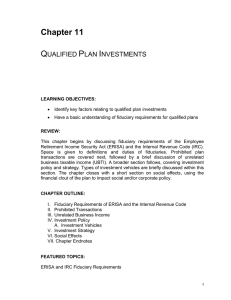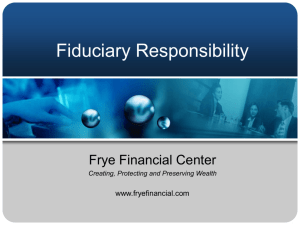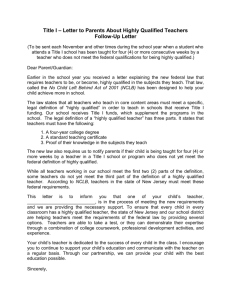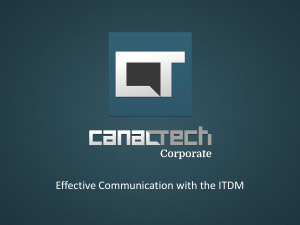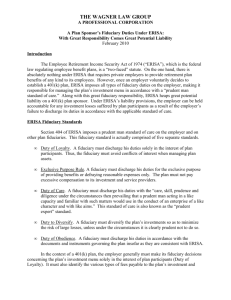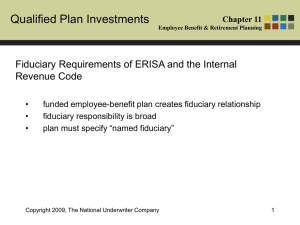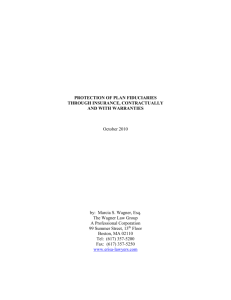TOOLS & TECHNIQUES OF LIFE INSURANCE PLANNING
advertisement
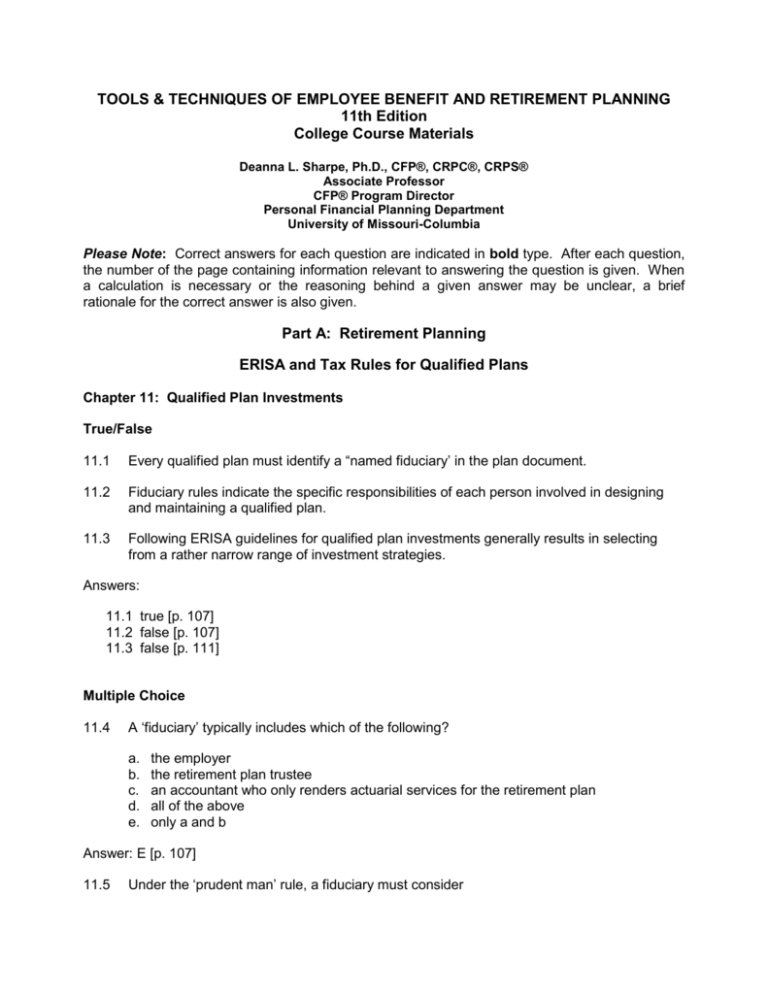
TOOLS & TECHNIQUES OF EMPLOYEE BENEFIT AND RETIREMENT PLANNING 11th Edition College Course Materials Deanna L. Sharpe, Ph.D., CFP®, CRPC®, CRPS® Associate Professor CFP® Program Director Personal Financial Planning Department University of Missouri-Columbia Please Note: Correct answers for each question are indicated in bold type. After each question, the number of the page containing information relevant to answering the question is given. When a calculation is necessary or the reasoning behind a given answer may be unclear, a brief rationale for the correct answer is also given. Part A: Retirement Planning ERISA and Tax Rules for Qualified Plans Chapter 11: Qualified Plan Investments True/False 11.1 Every qualified plan must identify a “named fiduciary’ in the plan document. 11.2 Fiduciary rules indicate the specific responsibilities of each person involved in designing and maintaining a qualified plan. 11.3 Following ERISA guidelines for qualified plan investments generally results in selecting from a rather narrow range of investment strategies. Answers: 11.1 true [p. 107] 11.2 false [p. 107] 11.3 false [p. 111] Multiple Choice 11.4 A ‘fiduciary’ typically includes which of the following? a. b. c. d. e. the employer the retirement plan trustee an accountant who only renders actuarial services for the retirement plan all of the above only a and b Answer: E [p. 107] 11.5 Under the ‘prudent man’ rule, a fiduciary must consider a. diversification of plan portfolio b. liquidity and current return of the portfolio relative to the anticipated cash flow requirements of the plan c. the projected return of the portfolio relative to plan’s funding objectives d. all of the above e. only a and b Answer: D [p. 108] 11.6 Adequate liquidity is one of several specific investment objectives in a qualified plan. Which of the following types of assets offers the most liquidity? a. b. c. d. e. common stock traded on the stock market real estate equipment leasing long term debt collectibles Answer: A [p. 110] Application 11.7 Walter Graves, owner of Graves Excavating wants to deposit employer stock in a qualified individual account plan. The stock is not publicly traded. Which of the following is (are) true for Walter? a. b. c. d. e. ERISA limits such contributions to 10% of fair market value of the assets employer stock will provide the qualified plan with ample liquidity Walter could use a profit-sharing plan to accomplish his objective a and c b and c Answer: C [p. 108] 11.8 Sarah Tensley, owner of Riverwood Spas, a dealer for saunas and hot tubs, installed a qualified retirement plan in her business three years ago. Sarah’s strength is in public relations and sales. She says “numbers make me nervous,” so she has delegated the handling and investment of the retirement plan to a trustee. a. Sarah has freed herself from any fiduciary responsibility, having transferred all of that responsibility to the plan trustee b. Sarah should be sure that her liability insurance covers any liabilities that arise out of breech of fiduciary responsibility c. Sarah can reimburse the plan trustee for any losses the trustee might incur as a result of performing fiduciary duties. d. a and b e. b and c Answer: E [p. 108] 11.9 Joan Garvey owns Garvey Management, a property management company. Last year, Garvey Management installed a qualified defined benefit plan. A small portion of the plan is invested in real estate. Joan hired Hank Thomas, an actuary, to evaluate the plan on an annual basis. Hank’s lease in his old office space ran out and Joan offered to let him occupy an office rent-free in one of the buildings that is in the qualified plan’s portfolio. This arrangement would be an acceptable transaction under ERISA. a. true b. false Answer: B [p. 108-109 – this arrangement would be a prohibited transaction under ERISA] 11.10 The IRS caught the plan trustee for Hopper Manufacturing violating the prohibited transaction rules. Hopper Manufacturing: a. must pay a initial penalty equal to 5% of the amount involved b. must pay a 100% penalty if the transaction is not corrected within time limits set by the IRS c. may face penalties for breech of fiduciary responsibility d. all of the above e. only a and b Answer: D [p. 109]
